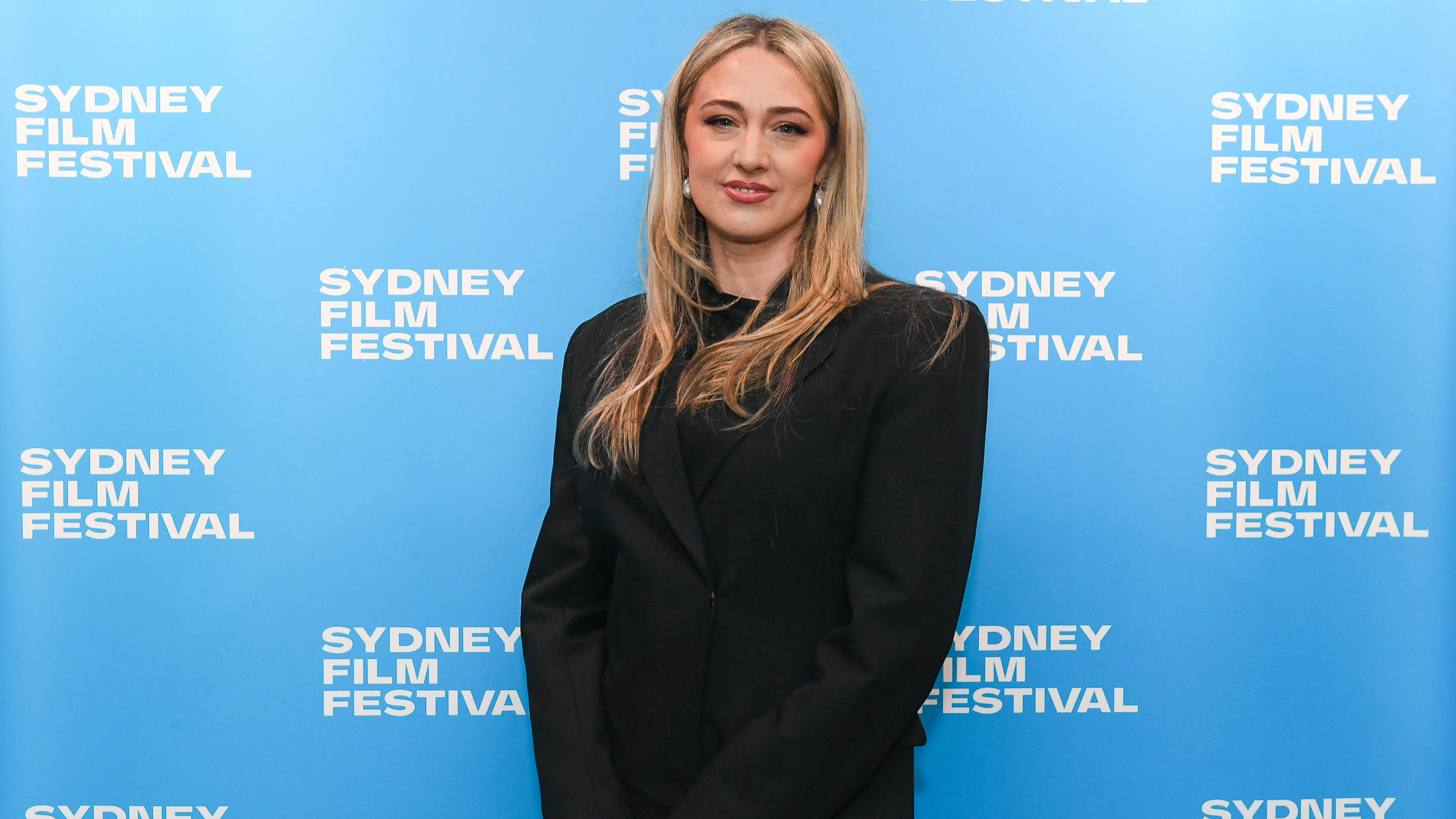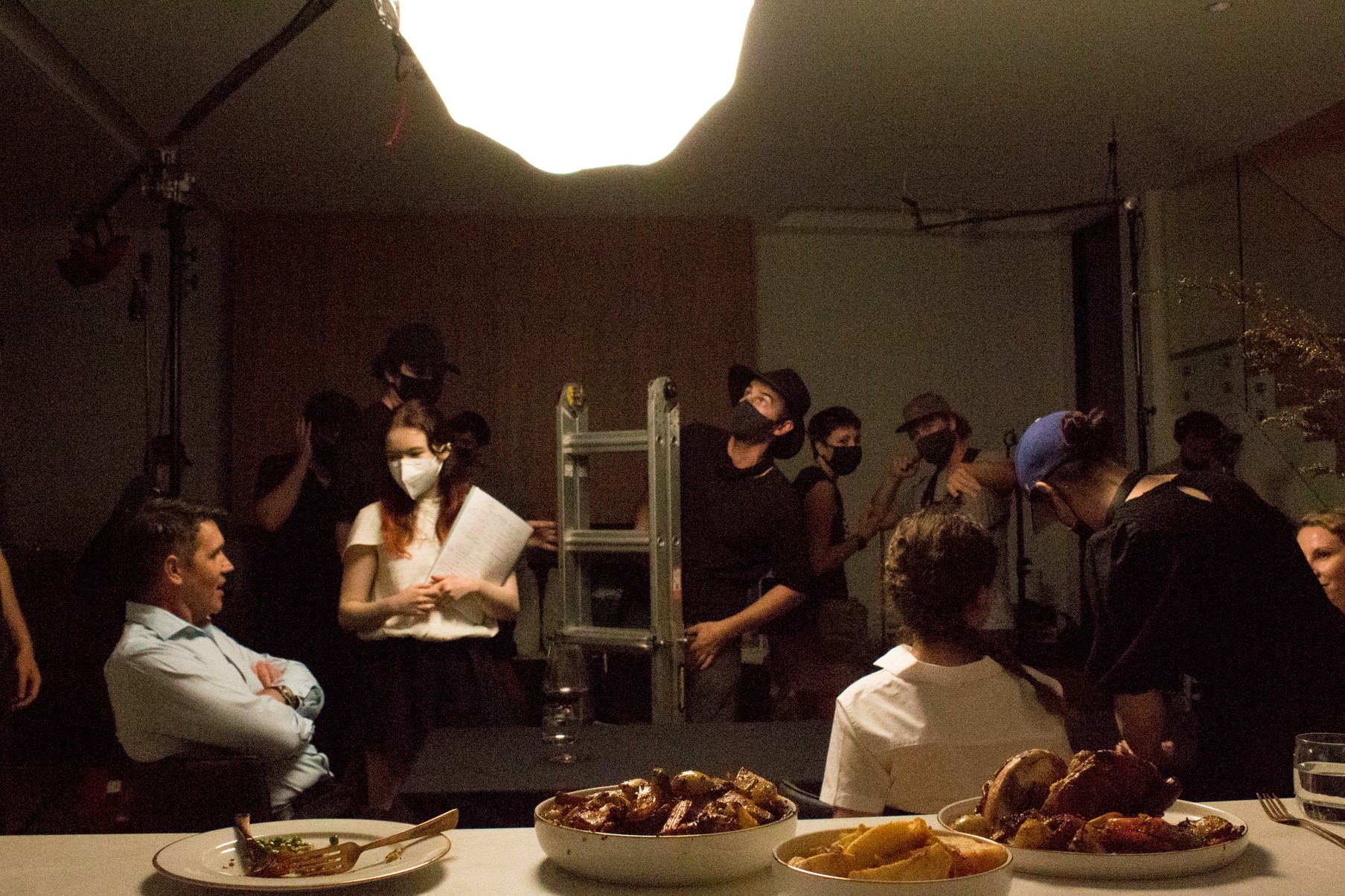Bethany Bruce, producer and co-founder of Australian production company Staple Fiction, is carving out a career exploring socially aware stories from female and gender diverse viewpoints, often navigating high-stakes emotional or social situations. In her latest documentary, Make It Look Real, which is written and directed by Kate Blackmore and produced by Bruce and Daniel Joyce, the unique role an intimacy coordinator plays on set is explored. While shadowing pioneering intimacy coordinator Claire Warden, Make It Look Real invites audiences behind the scenes on how intimacy coordinators are working to change attitudes on set, balancing the creative vision of directors with the comfort and safety of actors portraying stories on screen.
Ahead of its streaming release, Screen NSW spoke to producer Bruce on her journey to becoming a producer, creating a film in a documentary on Make It Look Real, and her advice for emerging producers.
Make It Look Real marks Bruce’s fifth collaboration with Blackmore and their debut feature. It’s now available to stream on Netflix Australia.
Tell us a bit about what drew you to becoming a producer.
What first drew me in was making shorts and realising how much of a film’s success depends on what happens behind the scenes, the creative vision, the “how will we get this made,” and the collaboration. Producing can feel like navigating a labyrinth, and I’ve always been drawn to the long game and the resilience it takes. I also find meaning in the process itself, in the act of making, not just the final product.
That focus on process is something I’ve carried into every project. On Make It Look Real, for example, when we couldn’t access a working set to film intimacy coordination, we created our own and developed the scenes in a way that felt ethical and authentic. It was a challenge, but one that reflected what producing is really about, creating the conditions for stories to reach people in a way that resonates and endures.
It was actually the Screen NSW Emerging Filmmakers Fund that first sparked my interest in producing scripted drama, with the short Wolf, alongside my work in documentary. Since then, projects like The Butter Scene, The Audition, and Make It Look Real with its narrative elements, have all shaped how I think about tone, format, and storytelling.
I’m especially drawn to procedural stories about women navigating high-stakes emotional or social situations often at a point of crisis or turning. These characters may be in trouble, but there’s always a sense of resilience and the possibility of finding a way through. That emotional terrain is where I find the most meaning, and it’s what keeps me coming back to producing.
Make It Look Real follows pioneering intimacy coordinator Claire Warden on the set of Tightrope. Intimacy coordinators are relatively new roles on set, what drew you to this story and exploring their roles on set?
I was really interested in exploring the intimacy coordinator as a kind of hidden figure of the MeToo movement. On the surface it’s a workplace safety role, like a stunt coordinator, but to me, it represents something deeper: one of the few lasting, structural shifts in Hollywood post-MeToo.
I was drawn to how intimacy coordination not only protects performers but also shapes how we see desire, consent, and agency on screen. These scenes are often where audiences learn and reflect on intimacy, so making consent visible and intentional felt powerful and necessary.
I’ve long been interested in the toll artists can pay for their work. The idea that even an A-list actor might lack control over her body or image really stuck with me, because if that’s the case, what hope does someone with less power have? I kept thinking about all the actors I admired growing up, doing their jobs without anyone like Claire advocating for them.
The role of the intimacy coordinator isn’t just about safeguarding, it’s about insisting on dignity, trust, and respect in a part of filmmaking that’s so often been mishandled in the past.
How did you and Kate Blackmore (writer and director) decide shadowing Claire on a film set was the best way to demonstrate and explore the role of an intimacy coordinator?
We knew we were interested in showing the work of the intimacy coordinator in action and giving audiences a sense of what it actually looks and feels like to have an intimacy coordinator on set, which would have been a first on film. Following Claire while she was working allowed us to capture the nuances of her role in real time, the negotiations, the planning, the way she builds trust with actors and directors. Over time as trust built between Kate our director and Claire, Claire became more open to sharing more of her work and of us observing her on set.
It also felt important to situate her in the broader context of production so viewers could see that intimacy coordination isn’t something that happens in isolation. It’s woven into the entire filmmaking process, from early rehearsals to final shoot days. By embedding ourselves in that environment, we hoped to demystify the role and show how it can be both a safeguard and a creative asset.
Make It Look Real has been selected to screen at numerous festivals including Adelaide Film Festival 2024, SXSW Austin 2025, and Sydney Film Festival 2025. What was your strategy behind submitting the documentary to these festivals?
Adelaide Film Festival for our world premiere really came from the origins of the project. We were fortunate to receive support from the Adelaide Film Festival Investment Fund through our South Australian co-production partner, Projector Films. I’d previously worked with producer Daniel Joyce on Martha: A Picture Story, and he came on board Make It Look Real in early 2019 to produce it with me. Daniel was instrumental in shaping the film from development through production. Because that backing was so essential to getting the project off the ground, it felt fitting to premiere in Adelaide and come home to the festival that helped make it possible.
The Adelaide Film Festival audience has a strong reputation for championing local productions, so it was important to share the film first with the community that had supported it. That screening also helped us secure Australian distribution with Bonsai Films, which gave us great momentum as we reached broader audiences.
For the international launch, we targeted SXSW Austin 2025 for its strong documentary programming and engaged, forward thinking audience. Our sales agent, Autlook Filmsales, felt it would be an ideal springboard to build global buzz ahead of release. Honestly, it was a dream come true to be selected, and the response was fantastic. The festival’s profile helped amplify the film’s themes around intimacy coordination and the post Me Too landscape internationally, and it received some wonderful recognition, including mentions in Variety and other trades.
Sydney Film Festival was both a strategic and sentimental choice. Sydney is our home base and a major industry hub, so screening there was important for connecting with Australian audiences and professionals. SFF has supported both Kate’s and my work from early on, our short The Butter Scene screened there, and other shorts, so it felt special to bring our debut feature back to a festival that has championed us.
Overall, our festival strategy was very intentional. Adelaide for a home ground launch, SXSW for an international breakout, and Sydney to connect with audiences and the industry that has supported us.
Make It Look Real is your fifth collaboration with Kate Blackmore. How did your working relationship come about, and how has it developed over time?
My collaboration with Kate over the past 10 years has been a real lifeforce in my career, something I’m incredibly grateful for. We were introduced by my mentor and producer, Bridget Ikin, during my Creative Producer attachment through Screen Australia’s Enterprise People program (2014–2016) at her production company, Felix Media.
The first work of Kate’s I saw was Girls, a short dual screen installation piece shot by Bonnie Elliott. I was immediately drawn to its tone, sense of play, and the procedural elements she explored. Our first project together was the ABC commissioned The Glass Bedroom, and from there we’ve gradually worked across various formats and lengths, including the short drama The Butter Scene (SFF 2021) and the half hour documentary The Art of Collecting for the ABC.
Our working relationship has developed through a combination of dedication, trust, persistence, and a bit of luck paired with a lot of preparation. Make It Look Real is the culmination of years of steady, often incremental work.
Over time, our friendship and creative trust have deepened. When you work this closely with a director as a producer, you both need to be fully emotionally invested. It’s not just about encouragement; you genuinely fuel each other to keep going until the project is complete. Kate’s work has always inspired me. The way she sees the world is both unique and deeply compelling.
What’s your advice for emerging producers and filmmakers looking to embark on their career in the screen industry?
In terms of practical advice, of course make the shorts. But also, keep track of your slate and think long term. Early on, I often hesitated to start developing certain projects, thinking ‘This will take too long’ or ‘It’s too big for me right now’. But my advice is, start anyway. Take out the option, get the writer’s room going, and begin with whatever resources you have. Build as you go and finance it incrementally.
Equally important is building relationships with your peers, they’re often the collaborators who will grow alongside you over time. Working in-house at a production company with an experienced producer can be incredibly valuable too. You’ll gain insights into their creative process and business strategies, especially in areas of the industry that are less visible from the outside. Those relationships and that exposure are really important.
And the business side is just as important as the creative. Understanding risk and how to manage or mitigate it without being afraid of it, will help you build a sustainable, long-term career. It’s something I’m always reminding myself of. Setbacks and rejections are part of the process, but staying resilient and connected to why you want to tell your stories is what keeps you moving forward.
What’s next for you or is there anything else you’d like to add?
I have several exciting projects in development with both long-time and new collaborators, and I’m really looking forward to bringing them to life. Kate and I are developing something new, we were just talking about it last night, and it’s shaping up to be really exciting. I’m also working on my first adaptation of a novel into a feature film in the genre space, which has been a creatively and strategically rewarding new challenge.
More broadly, I’m focused on building relationships that support bold, distinctive storytelling, work that’s made in NSW but speaks to an international audience. I’m always open to new partnerships, new ideas, and new ways of working.


